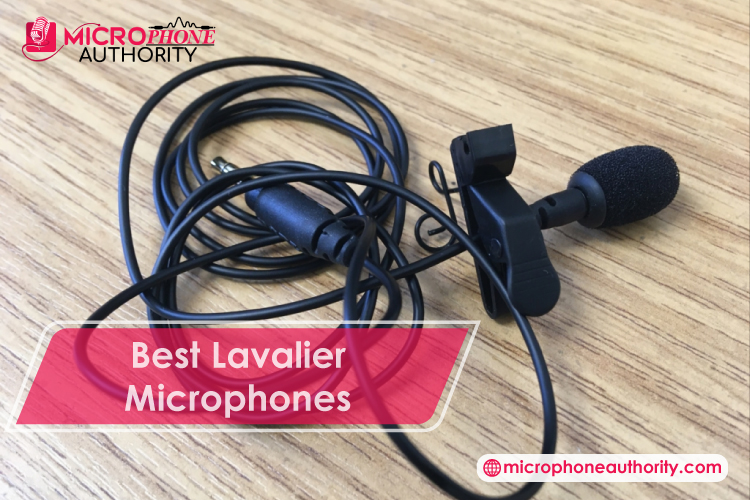Last Updated on May 27, 2023 by Robert Mejia
As a recording artist or an expert in the Audio production industry, you must have come across one of these two Rode Microphones: the Rode NT1 and the Rode NT1A.
Rode has built a reputable brand in the audio recording industry, most notably as the perfect brand for entry-level mics.
Both mics are built to comfortably cater to recording artists, instrumentals recording, and even podcasts.
The NT1 and NT1A are entirely different in design but for the mesh grille that features on both models. Rode’ engineers designed NT1 with a focus on midrange response, smooth high frequencies, and a warm tone to make this mic stand out.
The Rode NT1-A brings to life the dynamic range and incorporates features you will only find in high-end microphones brought to you at a more affordable price tag.
While both mics have some similarities, they were designed with very different needs in mind. We have delved into the details to make the selection process much more comfortable as you go about choosing one that suits your needs.
Let’s take a glance at what each has to offer before we put these two bad boys in one ring against each other.
RODE NT1

The NT1 resembles the NT1-A in design but for the microphone, which was uniquely designed from scratch.
It has a unique signature vintage sound and has very low self-noise, arguably one of the quietest microphones. The NT1 generally has a very neutral frequency response with a hint of warmth.
| Rode NT1 | Specifications |
| Microphone | Condenser |
| Frequency range | 20Hz-20kHz |
| Polar Pattern | Cardioid |
| SPL(max) | 132dB |
| Cable Connector | XLR |
| Self-Noise | 4.5dB |
| Colors | Black and White |
| Diaphragm | 1 Inch |
RODE NT1A

The NT1-A has been the point of reference and comparison in the recording industry. The NT1-A is everything you need to get professional sound, whether in a home studio or a recording booth. It has a cardioid polar pattern and offers a wide dynamic sound range hence suitable for a variety of voices. It also has a large 1″ capsule with a gold-plated diaphragm giving the mic a bit of character.
NT1A Specifications
| NT1A | Specifications |
| Polar Pattern | Cardioid |
| Frequency Range | 20Hz-20kHZ |
| Capsule | 1 inch |
| Acoustic | Pressure gradient |
| Self-Noise | 5dB |
| Output Impendence | 100 Ω |
| SPL (max) | 137dB |
| Maximum Output | 13.7mV |
| Weight | 326gms |
Accompanying accessories include:
- XLR Cable
- Shock mount with attached pop filter
- A storage pouch
Similarities and Differences between Rode NT1 and Rode NT1A
As both Rode NT1A and Rode NT1 are products of Rodes Microphone manufacturers, they both exhibit significant similarities. The inspiration and the market need that both fulfill are, however, different. In this comparison, we will break down everything from the condenser, frequencies, polar patterns, and much more.
Similarities
Differences
Price
NT1 is slightly more expensive than NT1A
Design
NT1 has a more appealing vintage look as compared to the NT1A
Treble
NT1A has a much brighter treble than NT1
Background Noise
Much as both microphones can block background noise, the NT1A captures a tiny bit of background noise in comparison to NT1
Sound
The NT1 has a more balanced Neutral sound, which gives a straight line on the graph up until about 4K, where it starts to rise steadily before flattening at around 15K. The NT1As figure rises between 100-200Hz, then it flattens at around 2k. Going forward, it increases and falls dramatically until about 10k. This explains why NT1A has some vibrancy to it. In general, the NT1 has warmer vintage tones, while the NT1A is dynamic and airy.
Body
The NT1 is made from 6061 aluminum, and then nickel plated to prevent corrosion and ensure durability.
Power Options
P24and P48 for both
Pickup Patterns
They both have a polar pickup pattern hence pick the sound from a single direction. While most mics have a polar pattern that varies slightly with frequency, these two are no different.
Max SPL
The NT1A has a slightly higher max SPL as compared to NT1 with a 137dBA vs. 132DbA. This makes the NT1A better at recording high pitch sounds. This, however, won’t make much difference in the sound unless you are recording instruments.
Frequency Response
Frequency is what differentiates the two mics significantly. The NT1 has a flatter and rich sound while the NT1A is more brighter, airy, vibrant.
Price
They both have really great qualities for the price. For many artists who are just starting out, either of these can be a great entry-level microphone with great features that competitively compare to the high-end mics, especially the NT1.
Generally, however, NT1 is more appropriate if you are going for a natural sound while the NT1A is excellent if you want brighter tones.
One thing you’ll appreciate about these two Rode microphones is the quality you get for the price. These are perfect for small projects and can be a great addition to your home studio.
While personal preference takes center stage when it comes to choosing a gadget, the NT1 and NT1A are sure to give you service for a long time. It is important to note that the NT1 was released 14 years after the NT1A. The NT1 is a later version and goes back to the basics.
The designers must have had the current needs of the market at the time of manufacture of both mics.
The NT1 stands out with its incredibly low self-noise. This is by far one of the quietest mics at this price range and has been compared to the Neumann.
The NT1A, on the other hand, is winning if you have no time for sound effects later. It gives you everything all at one go.
You might want to go for the NT1 if you like making your tweaks, and defining your own sound as a flatter sound is easier to work with.
While some recording artists might prefer a more natural, vintage sound as starters, others prefer a boost of confidence from the beginning.
Some have argued that the Rode NT1 is much better for sound recording, while Rode NT1A is better with instruments. Both are missing a PAD or a high pass filter, which is one of the downsides of both.
Either way, the designers of these two microphones have done an excellent job of giving consumers an option. You can’t complain as you are winning with either choice.





